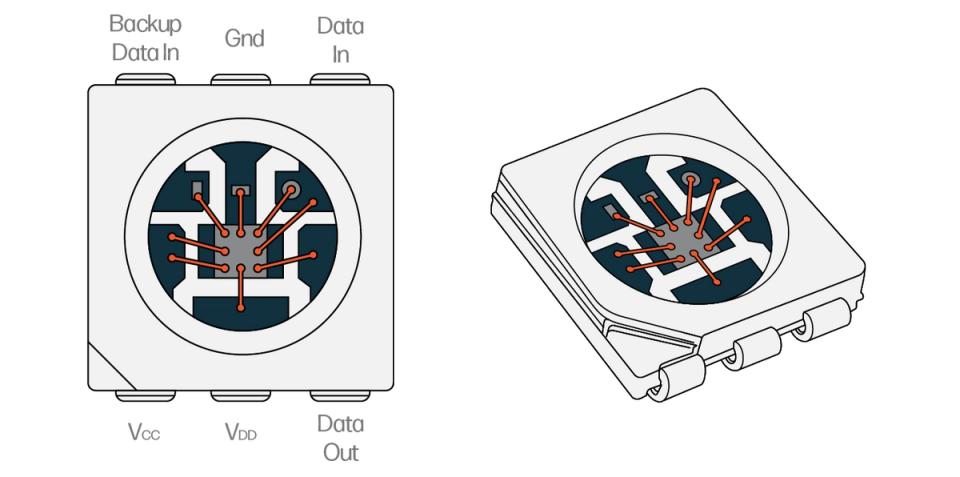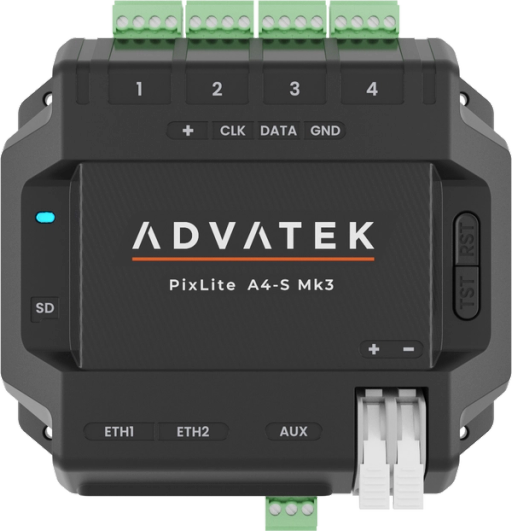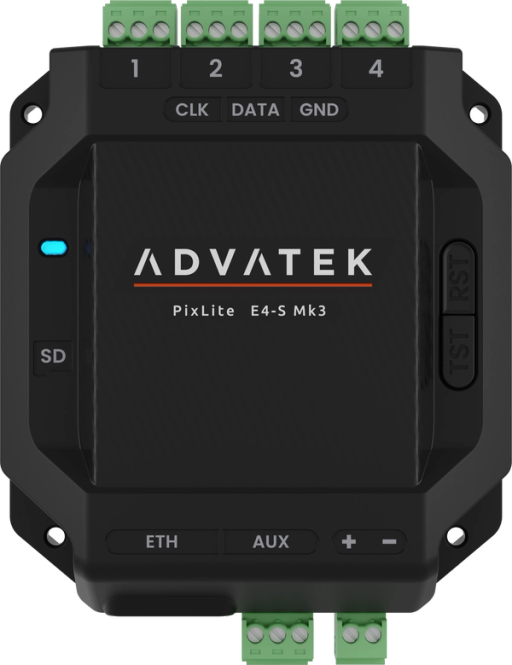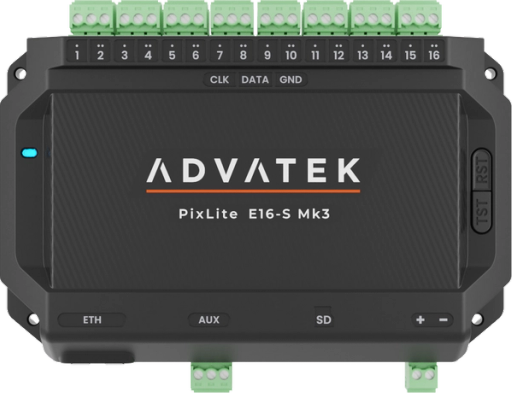Overview
This pixel protocol was designed by Witop Technology Co. Ltd in China. It uses 12V as its main power input for each chip, VDD, which is then dropped down to 5V inside each pixel for its logic requirements. This allows longer chains of pixels to driven in series. The control circuit comes in two physical format options: SOP8 and SMD5050. In the 5050 SMD package, LEDs are integrated, which provides a small physical footprint for each pixel. In the SOP8 package, LEDs are external to the control circuit, allowing for more flexibility with LED choice.

CS8812 pixel protocol
Specifications
PixLite Mk1 | |
PixLite Mk2 | |
PixLite Mk3 | |
Clock Type | Data-Only |
Color Resolution | 8 Bits |
Built-in Gamma Correction | 12 Bits |
Current Control | |
Physical Package | SOP8 or SMD5050 with integrated LEDs |
RGB | |
RBGW | |
Input Voltage | 12V |
Output Pixel Voltage | 12V |
PWM Rate | 8000Hz |
Suitable Camera | Up to 267fps |
Data Transfer Rate | 800kbps |
Redundant Data Line |
Colors
Color | Brightness | Wavelength |
|---|---|---|
Red | 450 mcd | 615 – 630 nm |
Green | 1300 mcd | 520 – 535 nm |
Blue | 280 mcd | 460 – 475 nm |
Considerations for Use
Advantages
- Very high PWM rate allows for filming these pixels with cameras up to 267fps
- 12V operation allows for long cable lengths and long chains of pixels
- Redundant data line reduces chance of entire strip failure
- 12-bit built-in gamma correction makes dimming curves more smooth
- Option for either SOP8 or SMD5050
Disadvantages
- Data-only restricts refresh rates to be limited by the speed of the protocol, which can be slow
Need Help with Your Next Project?
PixLite Support
Are you looking for CS8812 pixel drivers that work with Art-Net or sACN?
All PixLite Mk3 products support CS8812 as an available Pixel IC type, so get in touch with us to find out how the lighting specialists at Advatek can support you in your pixel lighting project.

PixLite® A4-S Mk3
Driving up to 24 universes of data, and offering easy mounting, sleek design and electrical fault protection — what’s not to love?

PixLite® E4-S Mk3
The E-series LED pixel controller is made for tighter budgets thanks to its ability to drive up to 24 universes of LED pixel control and route power directly to LEDs.

